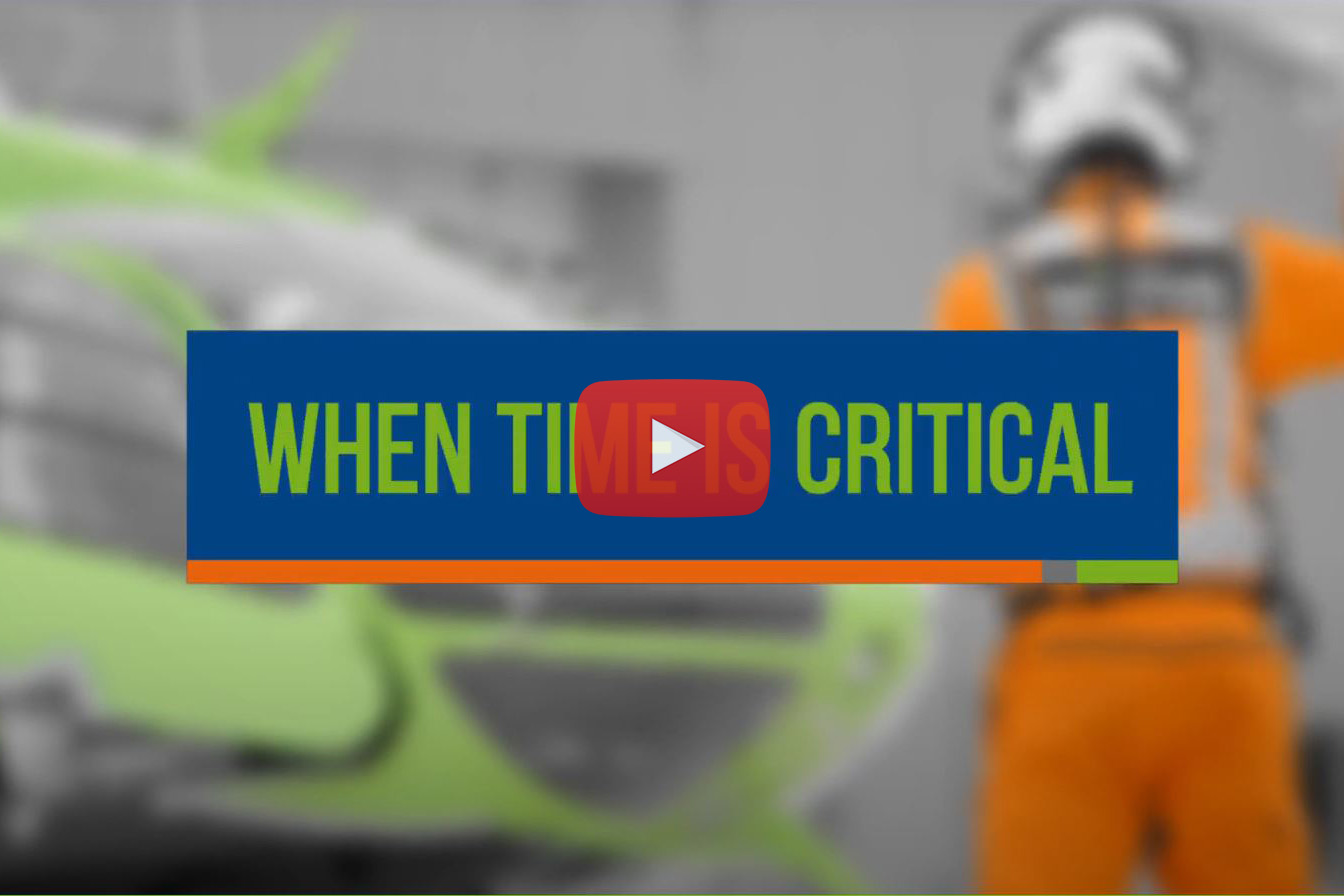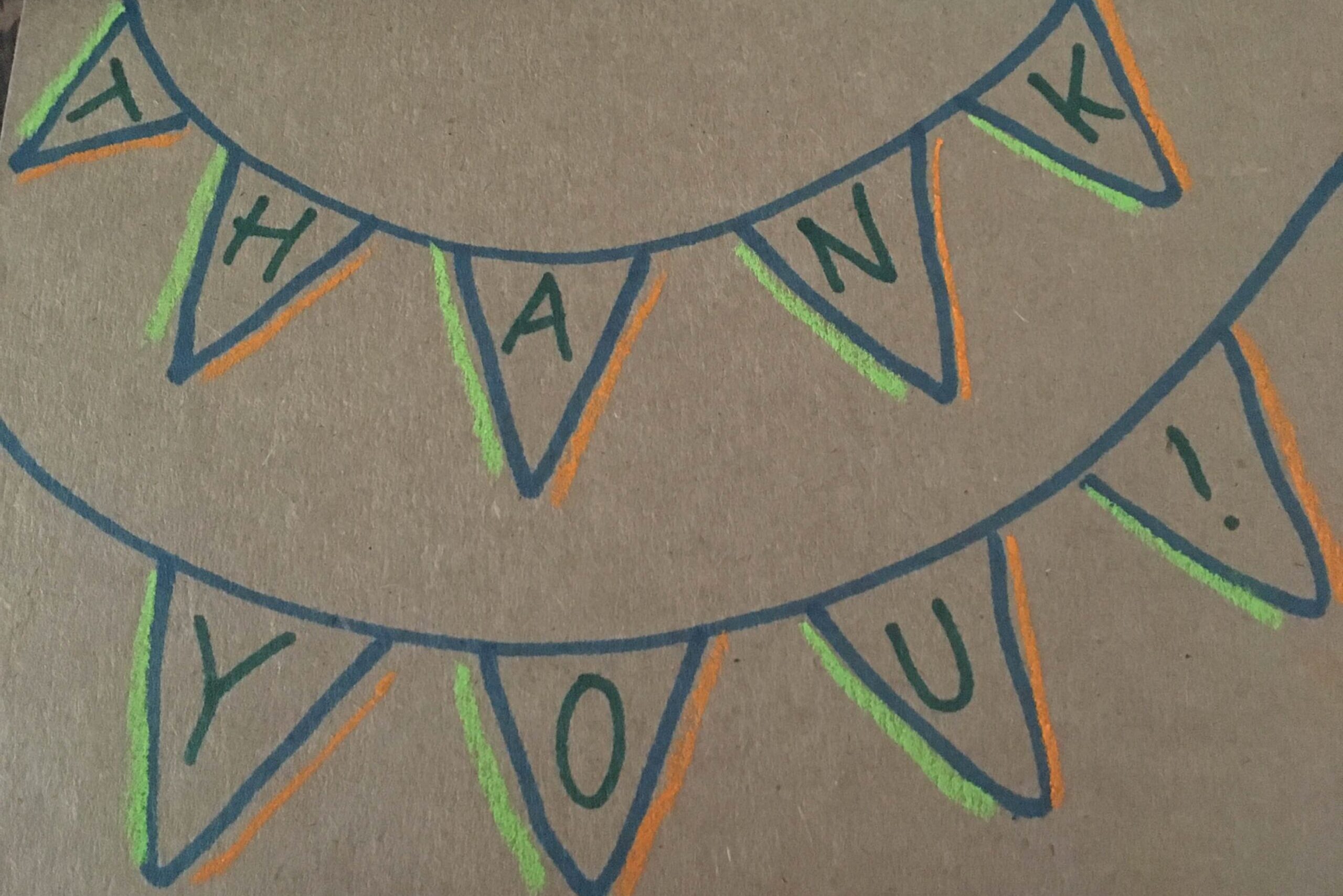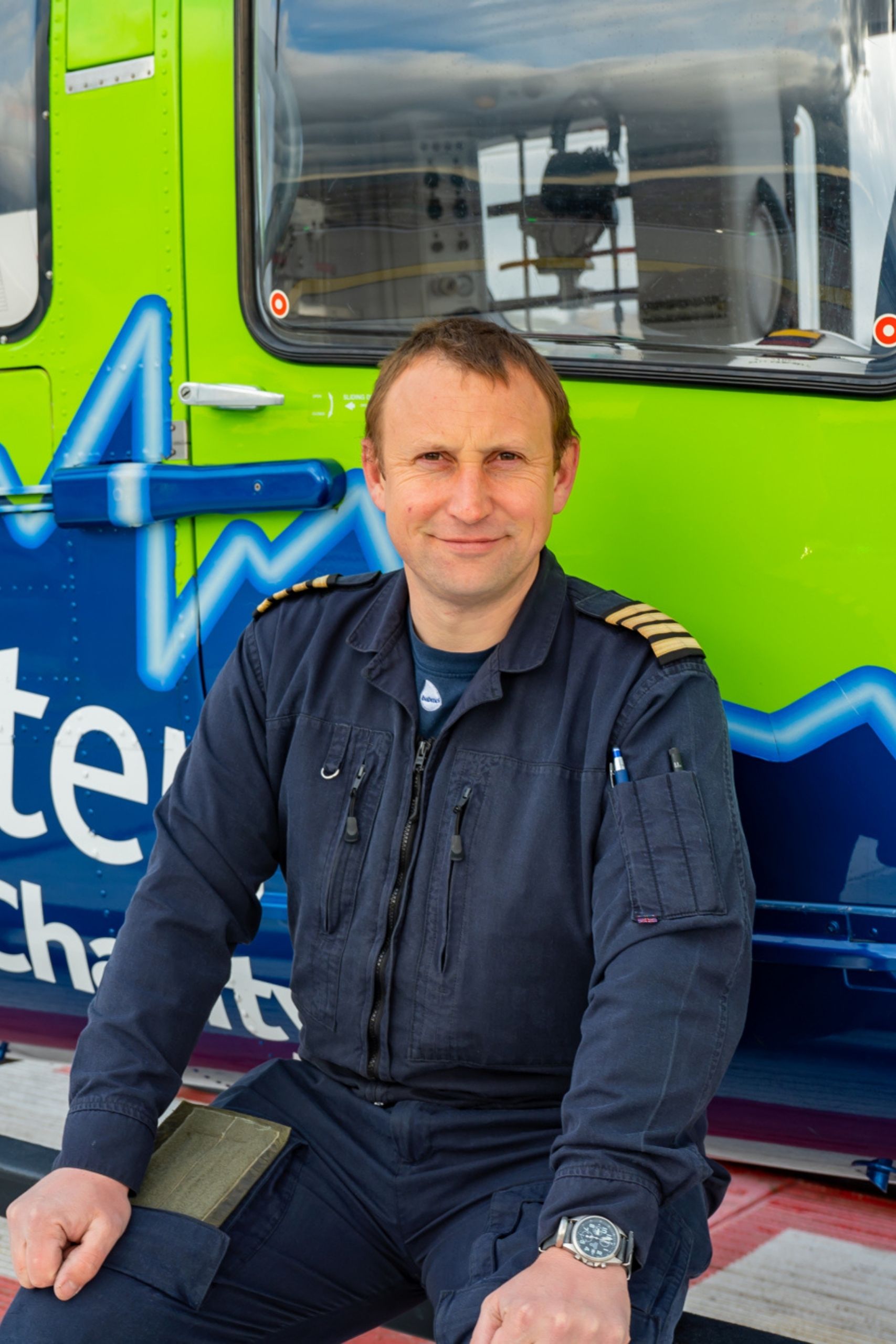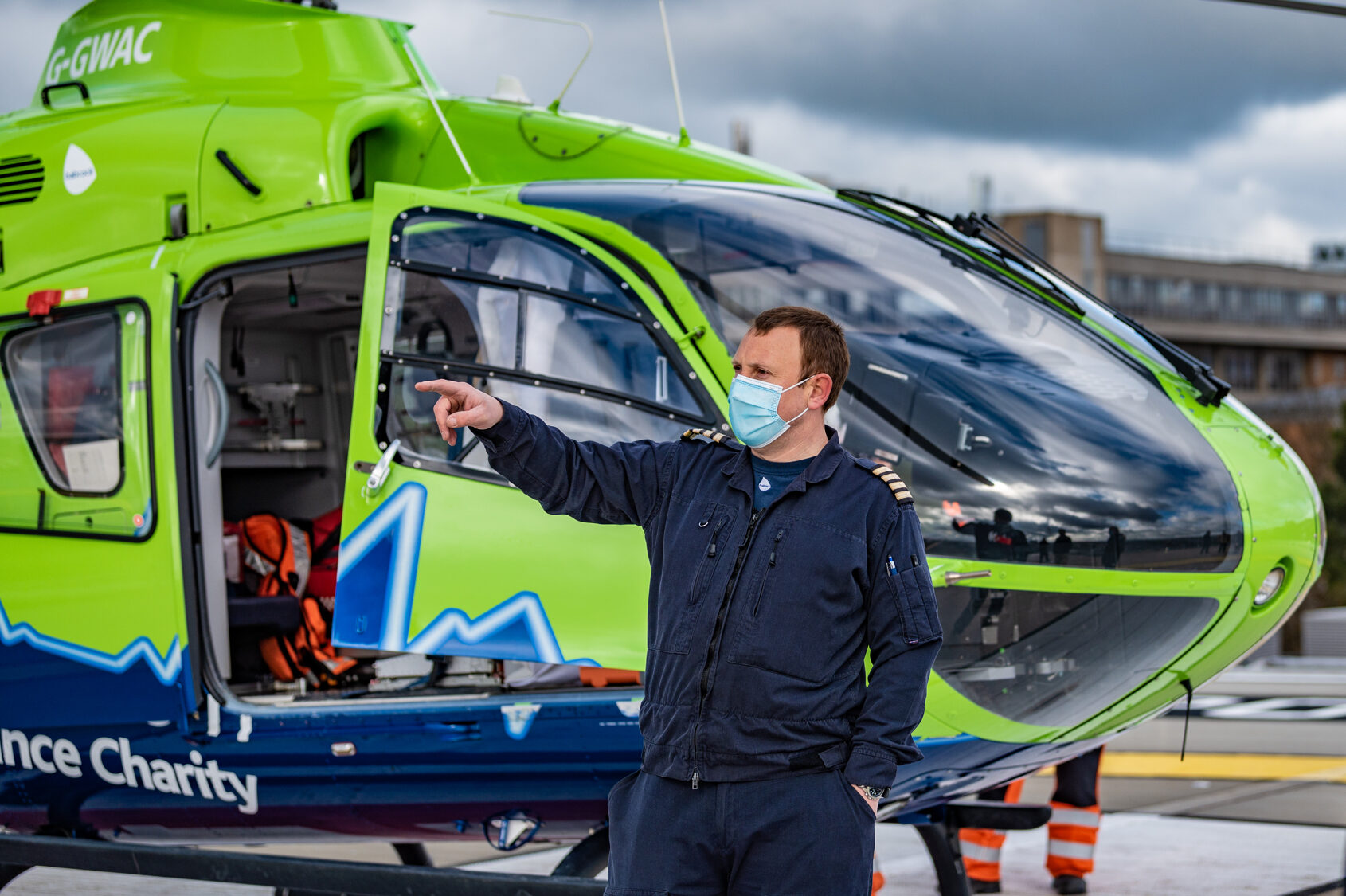
GWAAC responds to rider after fall
May 18, 2022
Thank you to our volunteers: past, present and future
May 31, 2022If you’ve read our recent blog A chat with Pilot Jim Green, you may have been waiting with eager anticipation for the grilling of our other pilot, Captain Alan Petch.
Without Alan and Jim, the lifesaving skills of our Critical Care Team would not reach a lot of our patients in urgent need. Alan and Jim provide that vital link and we’re lucky to have these two exceptional pilots at Great Western Air Ambulance Charity (GWAAC).
Alan, or Petchy as he is known at GWAAC, has only been with us for a few years but he’s already making waves in terms of the projects he has embarked on and the award he won in 2021.
We asked Alan a set of questions to find out more about his flying career, his life at GWAAC and what makes him tick.
How long have you worked for GWAAC?
I joined GWAAC in November 2020 but have worked for Babcock since March 2018 (Babcock provides charities like GWAAC with emergency medical aircraft). Before I joined GWAAC, I flew for Wales Air Ambulance, operating from their Cardiff Heliport base.
Whilst working in Wales, I also had the opportunity to operate as a Touring Pilot and conducted duties at other Helicopter Emergency Medical Services (HEMS) bases in England, Scotland, Wales and Northern Ireland. During this period, I was lucky to work with GWAAC; both at Almondsbury and the charity’s old base in Filton.
What did you do before?
Before Babcock, I served in the Fleet Air Arm of the Royal Navy. I flew Sea King and Merlin helicopters and had the opportunity to operate all over the world, both at sea and ashore. I was lucky to have the opportunity to fly in temperate, arctic and desert environments in a wide range of roles, including that of a Search and Rescue Aircraft Commander.
So, you’ve moved around a bit?
You could say that. Devon, Cornwall, Somerset, Hampshire, Shropshire, Lincolnshire, Oxfordshire, continental Europe, the Mediterranean, Middle East, Asia, USA… there’s nothing like a little variety!
Why did you want to work for GWAAC?
After a very busy time and lots of moving around, I decided I wanted to do something different.
I grew up in the Bristol area, so it’s great to be back in the west country serving my local community. I never dreamt I could work this close to home as a civilian pilot; I even get to ride my bike to work a couple of times a week.
What do you like most about flying in our region?
Operating close to the Bristol Channel, Severn Valley and Wye Valley. When the weather deteriorates these areas provide options for us to fly below and/or around the weather in order to get to the scene of an incident.
What is the hardest thing about being a HEMS pilot?
Judging tight landing sites is probably the toughest part of the job. The challenge associated with landing site selection is particularly acute in densely populated urban areas and steep rural terrain. The GWAAC operating area includes an abundance of both.
I’ve established a database of potential landing sites throughout the charity’s operating area which is helping to minimise response times, facilitate integration with other emergency service assets and enhance flight safety.
What have been your most challenging landings?
The most challenging landings are reduced visibility landings caused by recirculating dust or snow. They become even more challenging in the dark! You have to set the helicopter up so that it pretty much lands itself. Luckily at GWAAC, we rarely have to land in these conditions.
What is your favourite view from the GWAAC helicopter?
Am I only allowed one?! The sunset when flying down the Severn back to Almondsbury with the two bridges in sight is quite a view… sunrise over the foggy Cotswolds is quite cool as well… and Bristol by night is a sight to behold… the best ‘ground level’ view has to be from the deck at the BRI.
What does a typical day look like for you?
I start at 07:00 and spend the first half an hour on duty preparing the aircraft and conducting flight planning. This includes a daily inspection of the helicopter, weight and balance calculations, a check of Notices to Airmen and a check of the weather forecast for the day ahead. We brief as a crew at 07:30.
The rest of the day is filled with HEMS missions, admin and training; both from an aviation and medical aspect. The Critical Care Team will often simulate dealing with a patient. Although I have no medical training, it’s useful for me to participate in ‘Sims’ in order to understand what kit the team may need me to fetch, carry or dig out of bags for them.
Have you always wanted to be a pilot?
I decided I wanted to be a pilot when I was nine years old. I got the bug when we did a class project about aeroplanes. The father of one of the other pupils at my school worked for Paramount Airways and arranged an ‘access all areas’ trip to Bristol Airport.
What would you do if you weren’t a GWAAC pilot?
I can’t really imagine not flying. Lottery winner? Adventurer? A role where I can make a difference getting ‘things’ done is probably more realistic though.
Your three favourite things? Your three most hated things?
Likes: Beer, food and the great outdoors.
Dislikes: Boiled potatoes, Twiglets and Marmite (unless it’s on roast potatoes).
Tea or coffee?
Tea
One word to describe yourself?
Determined.
Our pilots can bring our specialist medical crew to anywhere in our area within 20 minutes. But they can only do so with your support.


I grew up in the Bristol area, so it’s great to be back in the west country serving my local community. I never dreamt I could work this close to home as a civilian pilot; I even get to ride my bike to work a couple of times a week.





